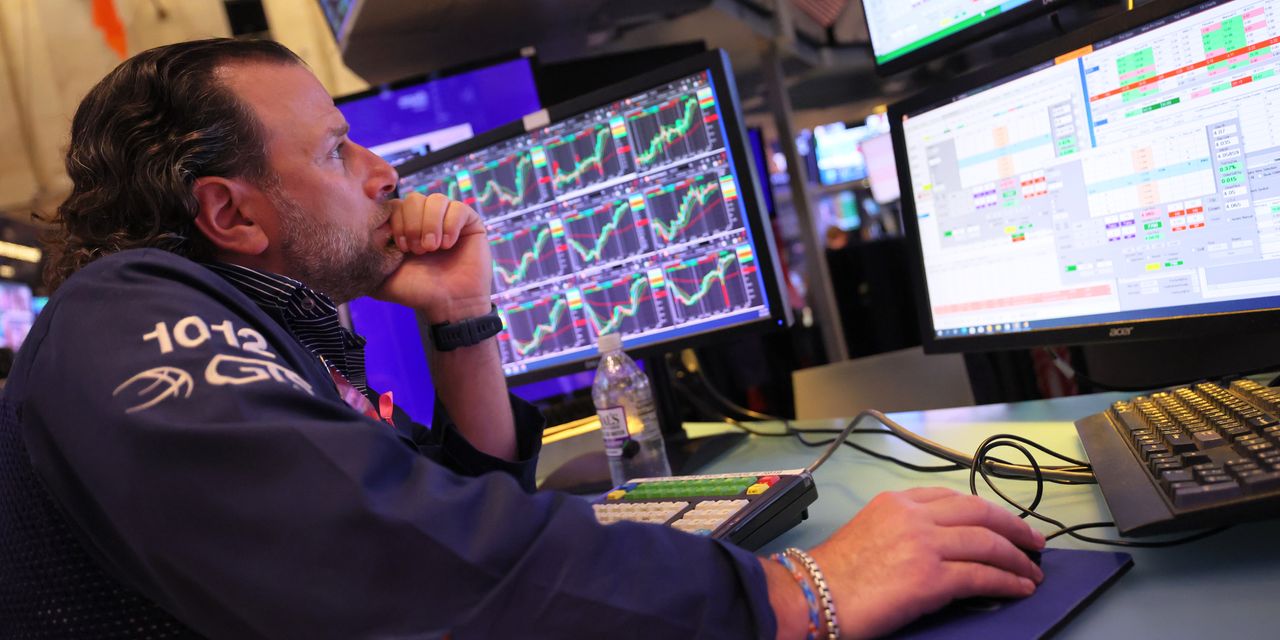Stocks have gotten yet another shot in the arm, and the entire market is starting to feel exciting. But what goes up must go down, so
Morgan Stanley
says to watch for a drop of 10% or more.
“We still expect a tactical correction,” wrote Mike Wilson, chief U.S. equity strategist at Morgan Stanley, referring to a decline that could be a buying opportunity, rather than the starting point for more losses. Wall Street defines a correction as a loss of 10% or more from a recent high, while a decline of 20% marks a move into a bear market.
The
S&P 500,
up almost 12% this year, is knocking on the door of 4300, a level it hasn’t reached since the end of August. Big Tech stocks, the leaders in artificial intelligence, have been rising since early in the year, lifting the index because their market values account for a large portion of the S&P 500’s total value. But on Friday, the entire market took off as investors welcomed the May jobs report, which showed both an unexpectedly large gain in employment and a slowdown in the pace of wage growth.
That is a welcome combination because while the labor market’s strength could mean the Federal Reserve will raise interest rates once more before it claims victory on inflation, it also indicates that the economy can be healthy without the need for too many more rate increases.
Still, there are a few problems. The first is that stocks are pretty expensive now.
The S&P 500 is now trading for just over 18 times the aggregate per-share earnings its component companies are expected to bring in over the next year, for a yield relative to the index price of a bit more than 5%. Ten-year Treasury debt, seen as a safe investment, yields about 3.7%, so the reward for the risk of holding stocks—the so-called equity risk premium—is less than two percentage points.
According to Morgan Stanley, the premium rarely goes below 2%, based on data going back to 2008. If concern about the outlook for corporate earnings sends stock prices lower, as Morgan Stanley believes it could, the risk premium should scoot higher, perhaps to as high as 4%, the bank argues. That would bring the index’s multiple down several points from here.
That hit to earnings could indeed be on the way.
FactSet
data indicate that the consensus call for aggregate 2023 EPS for companies in the S&P 500 is about $220, but that could prove too optimistic, given the current economic challenges.
Surveys of banks show that institutions have tightened their lending standards over the past year, partly because higher rates have made it harder for borrowers to handle their debts, and partly because of the recent turmoil in banking. Reductions in lending mean less spending, with negative implications for profits.
The bank says that recent surveys on lending standards indicate that the S&P 500’s EPS this year should be down 16% from 2022, which would put it below $200. Last year’s result was $216.
That means, for the market, “the time is now for a proper reset on valuation that better reflects these growth risks,” writes Wilson.
Wilson is making what feels like a bold call, given that others on Wall Street are speaking up in support of the market’s recent run. Evercore lifted its price target to 4450 from 4150, saying that earnings will be better than feared and that the market is beginning to reflect that likelihood in the past few days.
The firm says that while the Fed is reducing the money supply from its Covid-era peak, the supply could still settle out at a higher level than before the pandemic, a major reason why spending and corporate profits can remain elevated. Wilson’s call, meanwhile, hinges on the possibility that the full effects of cuts to the money supply haven’t yet been felt. It’s a bet on what has yet to happen, rather than on the positive developments that have already lifted stocks.
Whether the market experiences a correction, does nothing for a while, or moves higher is difficult to game out. But if there’s one takeaway from all of this, it’s that anyone buying stocks today still might want to hold some cash and wait for better prices to buy even more.
Write to Jacob Sonenshine at [email protected]
Read the full article here













